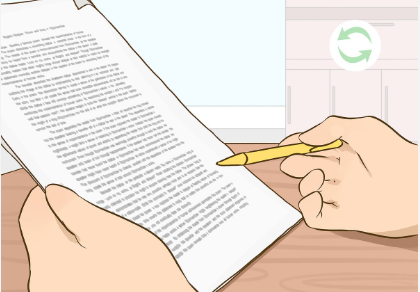Introduction
The body paragraphs of an essay serve as the heart of the piece, where the main arguments, evidence, and analysis are presented. Crafting a strong body is essential for conveying your message effectively and persuasively to the reader. In this guide, we will explore the essential techniques and guidelines for writing the body of an essay, including structuring your paragraphs, incorporating evidence and analysis, and maintaining coherence and cohesion throughout.
The body of an essay refers to the main section of the writing where the author presents their arguments, analyses, evidence, and elaborations on the topic. It typically follows the introduction and precedes the conclusion. In the body paragraphs, the writer develops their thesis statement by providing supporting details, examples, explanations, and counterarguments. Each body paragraph focuses on a specific aspect or point related to the main topic, and they are usually organized in a logical and coherent manner to effectively convey the writer’s message.

Structuring Your Paragraphs
One of the key elements of writing an effective body is structuring your paragraphs in a clear and organized manner. Each paragraph should focus on a single main idea or argument and follow a logical progression of thought. A well-structured paragraph typically consists of the following elements:
- Topic Sentence: The topic sentence introduces the main idea or argument of the paragraph and provides a roadmap for the reader. It should be clear, concise, and directly related to the thesis statement of the essay.
- Supporting Evidence: After introducing the main idea, the paragraph should provide evidence to support and reinforce the argument. This may include quotations, examples, statistics, or other types of evidence that help to validate the claim being made.
- Analysis: Once the evidence has been presented, it is important to analyze and interpret it in relation to the main argument of the paragraph. Analysis involves explaining how the evidence supports the argument and why it is relevant to the overall thesis of the essay.
- Transition: Finally, each paragraph should end with a transition sentence that connects it to the next paragraph and helps to maintain the overall flow and coherence of the essay. Transitions can be used to introduce new ideas, compare or contrast different points, or summarize the main points of the paragraph.
Incorporating Evidence and Analysis

In addition to structuring your paragraphs effectively, it is important to incorporate evidence and analysis to support your arguments. Evidence can take many forms, including:
- Quotations: Direct quotations from primary or secondary sources can provide authoritative support for your arguments. When using quotations, be sure to properly cite the source and integrate the quotation smoothly into your own writing.
- Examples: Examples from real-life situations, case studies, or personal experiences can help to illustrate and clarify your arguments. Be sure to choose examples that are relevant to your topic and clearly support your main points.
- Statistics: Statistical data can be used to add credibility and authority to your arguments. When using statistics, be sure to cite the source and provide context for the data presented.
Once you have presented your evidence, it is important to analyze and interpret it in relation to your main argument. Analysis involves critically examining the evidence and explaining how it supports your thesis statement. This may involve identifying patterns or trends, evaluating the reliability of the evidence, or considering alternative perspectives.
Maintaining Coherence and Cohesion

Finally, it is important to maintain coherence and cohesion throughout the body of your essay. Coherence refers to the logical flow of ideas within and between paragraphs, while cohesion refers to the connections and relationships between different parts of the essay.
One way to achieve coherence and cohesion is to use transitional words and phrases to signal the relationship between ideas. Transitional words such as “however,” “therefore,” “in addition,” and “on the other hand” can help to guide the reader through your argument and clarify the connections between different points.
Additionally, be sure to use clear and concise language and avoid unnecessary repetition or redundancy. Each paragraph should build on the previous one and contribute to the overall argument of the essay.
Are you struggling to complete your essay paper? Don’t stress yourself out! We are here to help you with our expert assistance. Our team of professionals is ready to guide you through the writing process, ensuring that you produce a top-notch essay. Contact us now and let us help you achieve academic success.
FAQs About the Body of an Essay:
1. What is the main purpose of the body paragraphs in an essay?
The body of an essay is the heart of your argument or explanation. It’s where you develop your ideas, provide evidence to support your thesis, and convince the reader of your perspective. Essentially, it answers the “how” and “why” of your argument.
2. How many body paragraphs should an essay have?
The number of body paragraphs depends on the complexity of your topic and the length of your essay. While there’s no strict rule, a standard 5-paragraph essay typically has 3 body paragraphs, each focusing on a single main point that supports the overall thesis. However, longer essays may have more body paragraphs to address various aspects of the topic.
3. What is the structure of a strong body paragraph?
Each body paragraph typically follows a similar structure:
- Topic sentence: Clearly introduces the main point of the paragraph, directly connecting back to the thesis statement.
- Supporting evidence: Provides evidence to back up your claim in the topic sentence. This can include facts, statistics, quotes from credible sources, examples, or personal experiences (depending on the essay type).
- Explanation and analysis: Explain how the evidence supports your claim and analyze its significance. This is where you demonstrate your understanding of the topic and develop your argument with clear reasoning.
- Transition sentence: Connects your paragraph to the next one, ensuring a smooth flow of ideas.
4. What are some common mistakes to avoid in the body paragraphs?
- Going off on tangents: Stay focused on your main point and avoid introducing irrelevant information.
- Lack of evidence: Ensure each body paragraph has sufficient evidence to support your claims.
- Weak reasoning: Explain how your evidence connects back to your argument and avoid making illogical leaps.
- Poorly-cited sources: If using external sources, ensure proper citation practices to avoid plagiarism.
- Repetition: Avoid repeating the same points or using excessive repetition of words and phrases.
5. Do you have any tips for writing effective body paragraphs?
- Develop an outline: Organize your ideas and evidence beforehand to ensure each paragraph has a clear focus and contributes to the overall argument.
- Vary your sentence structure: Use different sentence lengths and structures to maintain reader interest and avoid monotony.
- Proofread carefully: Check for errors in grammar, punctuation, and spelling to ensure clarity and professionalism.
6. Are there any additional resources available to learn more about writing strong body paragraphs?
Many online resources offer guidance on crafting effective body paragraphs. You can search for “[how to write essay body paragraphs]” or “[tips for writing body paragraphs]” to find articles, videos, and other helpful resources.
